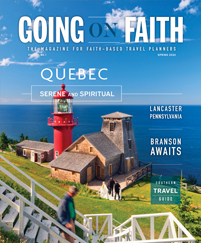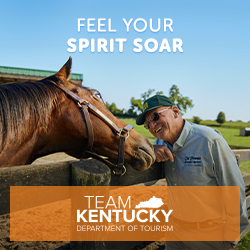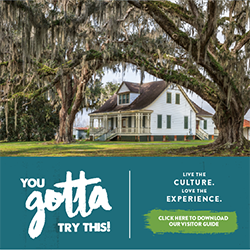Indian Pueblo Cultural Center
Albuquerque, New Mexico
Owned and operated by the 19 Indian pueblos of New Mexico, the Indian Pueblo Cultural Center gives visitors an overview of the state’s Native American legacy and snapshots of numerous cultural events. Six thematic areas explore Pueblo history, beliefs and daily life.
On the weekends, traditional dances are held in the center’s plaza area. The Pueblo Harvest cafe serves a fusion of Native and Southwestern food with traditional Pueblo ingredients. Groups can dine on the outdoor patio, where pizzas are baked in a Pueblo horno oven, and order Native pies, cookies and bread baked daily.
“In November 2017, the cafe launched new lunch and dinner menus featuring precontact options, which are made with indigenous ingredients of the Native Americans before any outside cultures influenced their cuisine,” said Brenna Moore, public relations and communications manager for Visit Albuquerque.
Unique to New Mexico, the 19 pueblos each operate their own government but share a common prehistory and culture. More than a dozen near Albuquerque still practice their rich heritage and invite visitors into their communities. The Acoma Sky City Pueblo, atop a 365-foot sandstone mesa and 45 minutes west of Albuquerque, offers year-round tours, a cultural center, a gift shop and a museum. The Laguna Pueblo, on route to Acoma, was settled in 1450 and comprises six major villages. The Jemez Pueblo, in the mountains 55 miles northwest of Albuquerque, has been occupied since the 16th century and is known for its pottery, sculpture, basketry, embroidery, moccasins and jewelry.
Golden Spike National Historic Site
Promontory Summit, Utah
On May 9-10, 2019, the Golden Spike National Historic Site will celebrate the 150th anniversary of the Golden Spike during the Spike 150 event. Festivities will feature the Mormon Tabernacle Choir, the Utah Symphony, dance, art installations and tours of the Spiral Jetty, an earthwork sculpture constructed in 1970 by American sculptor Robert Smithson.
The historic site encompasses a 15-mile stretch of the original transcontinental railroad. In a remote valley on the north end of the Great Salt Lake, the last spike was driven into place within 100 yards of the visitors center.
“You get a deep sense of place at Golden Spike and, with no other buildings in sight, it’s easy to picture what it was like 150 years ago when the first transcontinental railroad was completed and what it meant for our nation,” said Emily Moench, spokesperson for the Utah Office of Tourism.
Daily demonstrations showcase fully functioning replicas of Jupiter and No. 119, the steam locomotives that met at Promontory Summit in 1869. Volunteers re-enact the Driving of the Last Spike Site ceremony. A 1.5-mile trail showcases building techniques of the railroad, and ranger-led hikes are offered on Sundays during the summer.
Among the five films offered at the visitors center, 21-minute “Golden Spike” gives an overview of the transcontinental railroad. Another popular film, “Andrew J. Russell, A Visual Historian,” details the life and work of the photographer commissioned to document the railroad’s construction during the 1860s.









